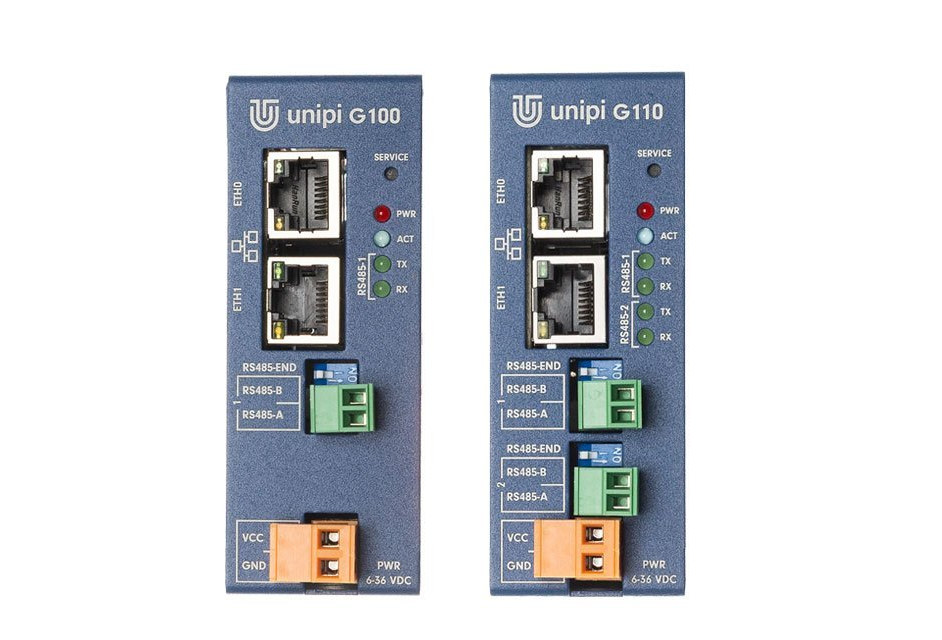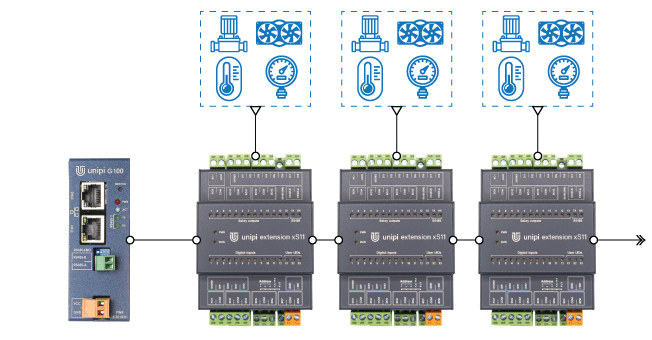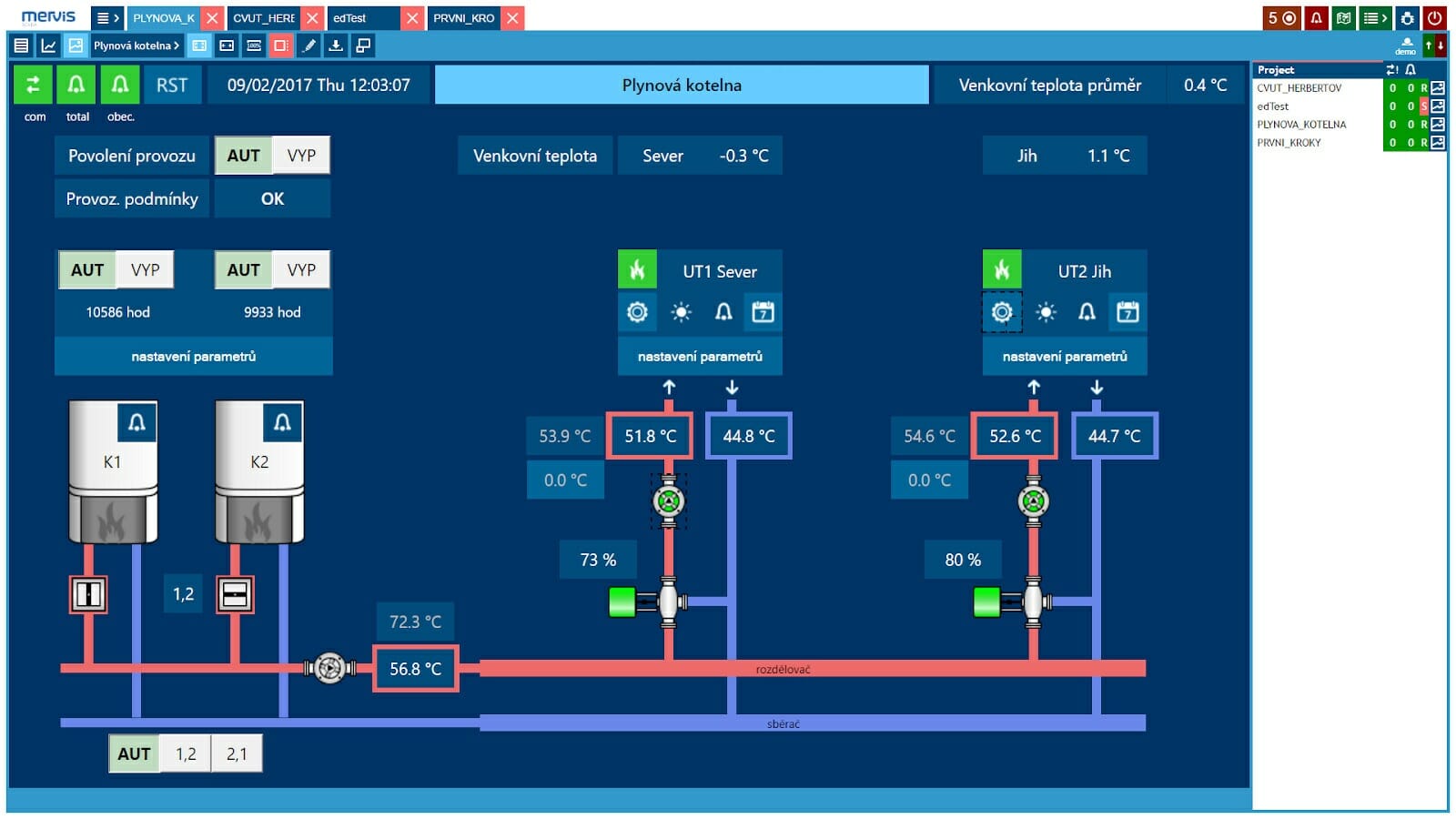Based in the Czech Republic, UniPi Technology design and manufacture programmable logic controllers, gateways, sensors and systems for smart homes, building management systems, industry and automation projects.
Their latest product is UniPi Gate G100/G110 Linux IoT gateway with Ethernet and RS485 interfaces. When the company contacted CNX Software about the gateway, they told us the system was based on a quad-core Cortex-A53 processor clocked at 600 MHz. Since we are not aware of such SoC, we asked, and UniPi told us it was Rockchip RK3328. That processor is normally clocked at 1.5 GHz, and it turns out the company purposely underclocked the processor to 600 MHz to extend the temperature range and reduce the heat emitted by the CPU.

- SoC – Rockchip RK3328 quad-core Cortex-A53 processor @ 600 MHz
- System Memory – 512MB RAM
- Storage – 16GB eMMC flash, MicroSD card slot
- Networking – 2x Ethernet RJ45 ports (1x Gigabit Ethernet, 1x 10/100M Fast Ethernet)
- Sensor interface – 1x (G100) or 2x (G110) RS485 terminal blocks
- Misc – Power, Act, Ethernet status LEDs
- Power Supply – 6 to 36V DC via 2-pin terminal block
- Dimensions – 94 x 70 x 35 mm (DIN rail or wall mountable)
- Temperature Range – Operating: 0°C to +70°C; storage: -20°C to +85°C
- IP Rating – IP20

Unipi Gate G100/G110 Linux IoT gateway and logic controller is designed for industrial automation, building management systems and other automation projects, and for instance, can be used as a data logger in SCADA or MES control systems, or in cloud services within Smart City, Smart Factory and IoT/IIoT projects.
Unipi Gate runs Debian Linux based OS, and by default the gateway ships with Node RED preinstalled, but you could also order it with the a minimal image and install your preferred framework including Hone Assistant, Codesys, Domoticz, openHAB, and others, as well as UniPi’s own Mervis software.

UniPi Gate G100 and G110 gateways are available now starting at around 200 Euros including 20% VAT. More details can be found in the product page and announcement post.

Jean-Luc started CNX Software in 2010 as a part-time endeavor, before quitting his job as a software engineering manager, and starting to write daily news, and reviews full time later in 2011.
Support CNX Software! Donate via cryptocurrencies, become a Patron on Patreon, or purchase goods on Amazon or Aliexpress




